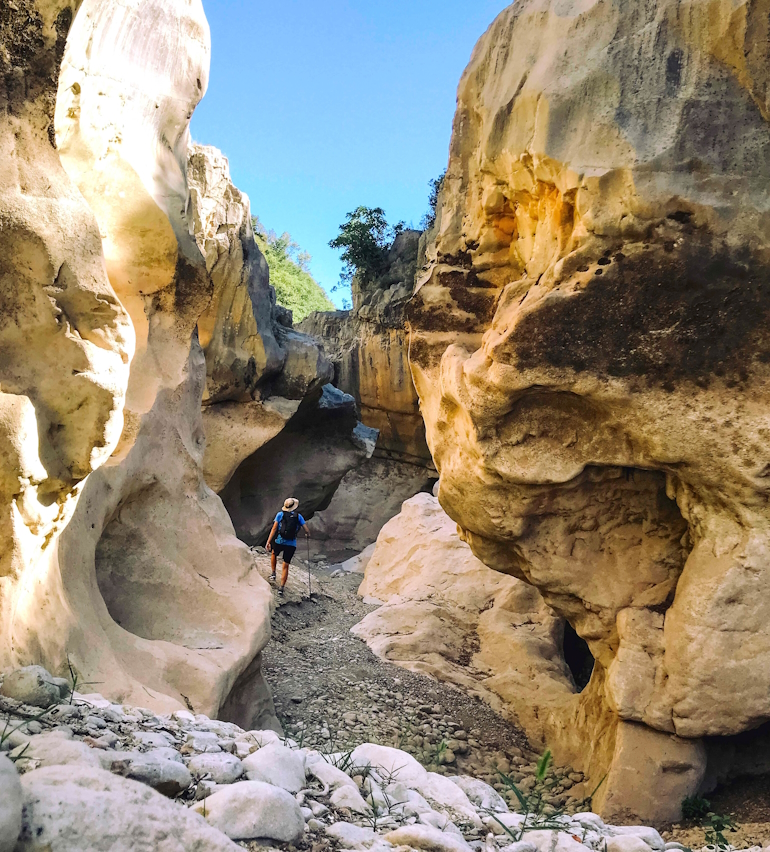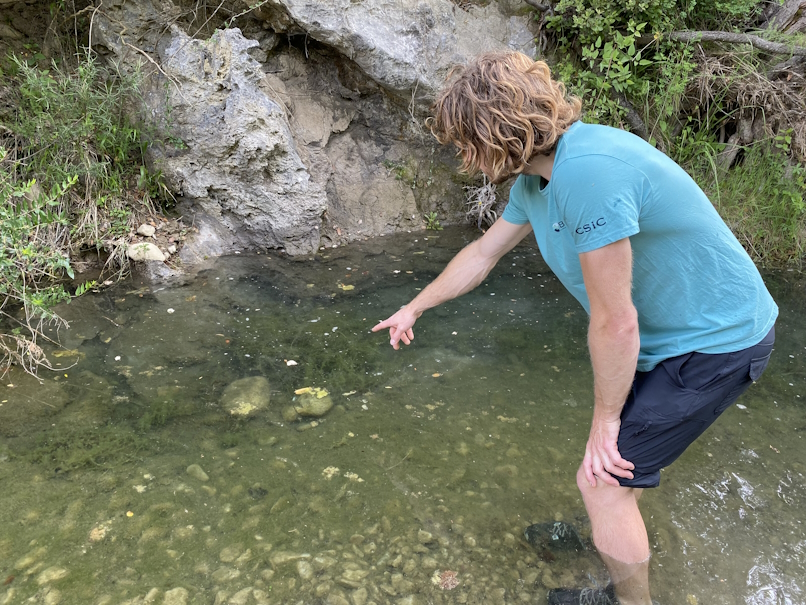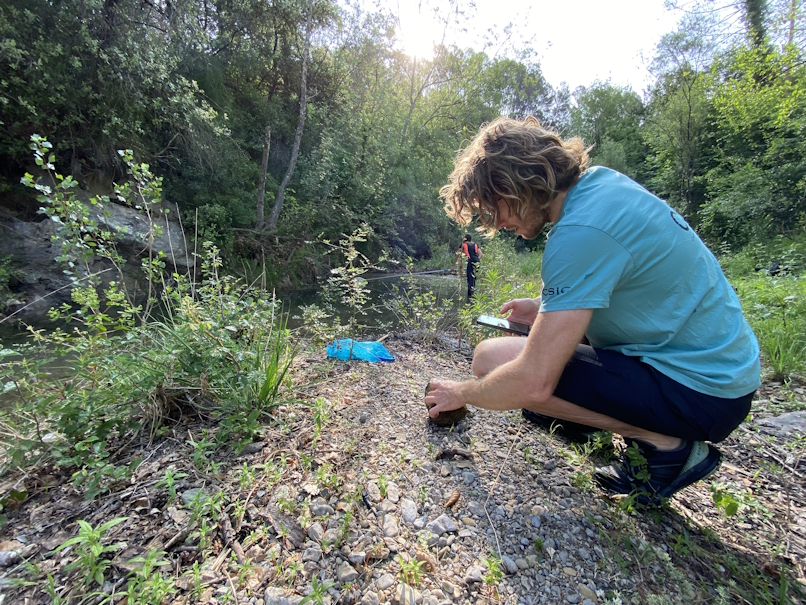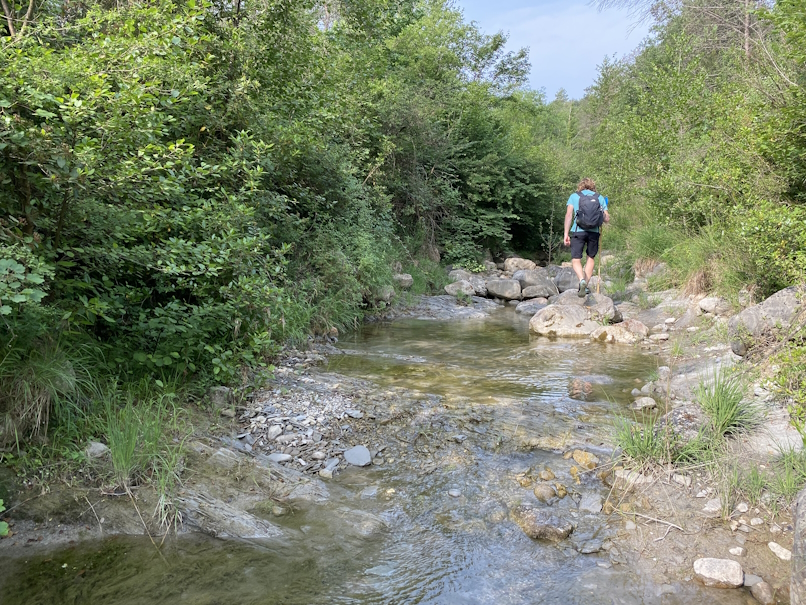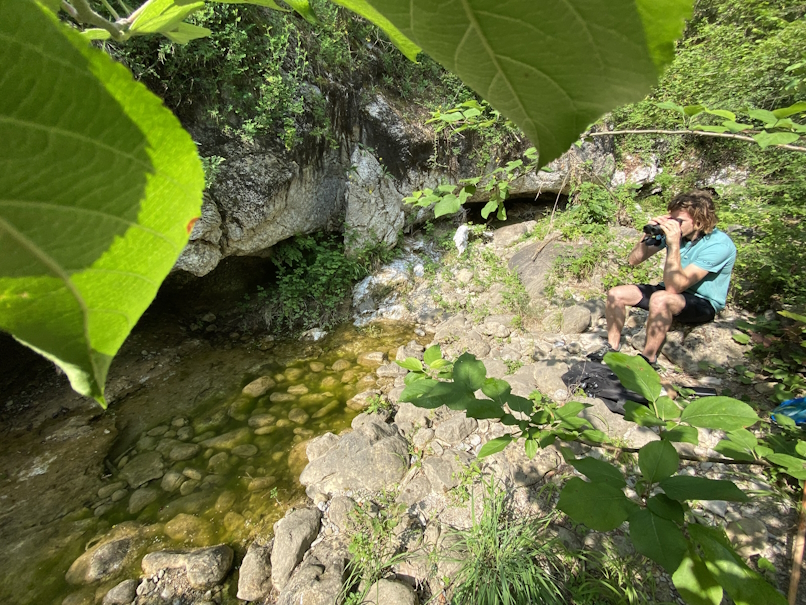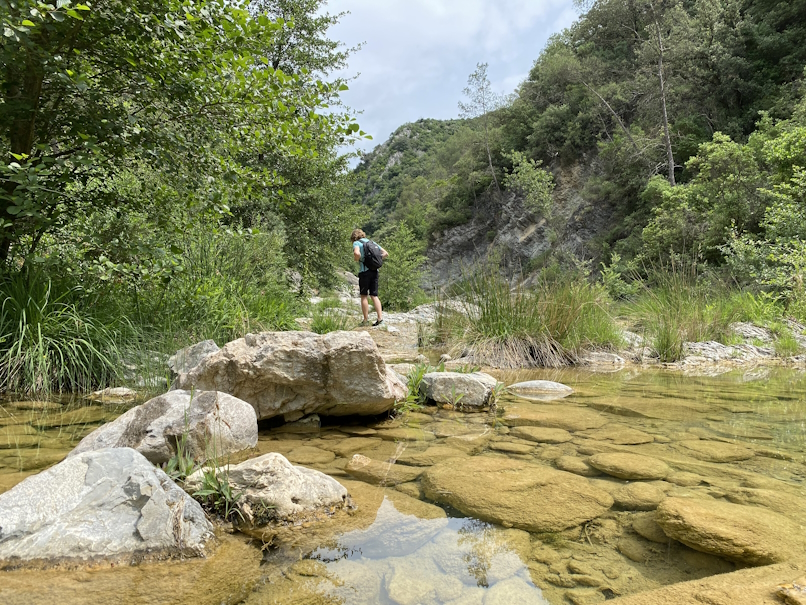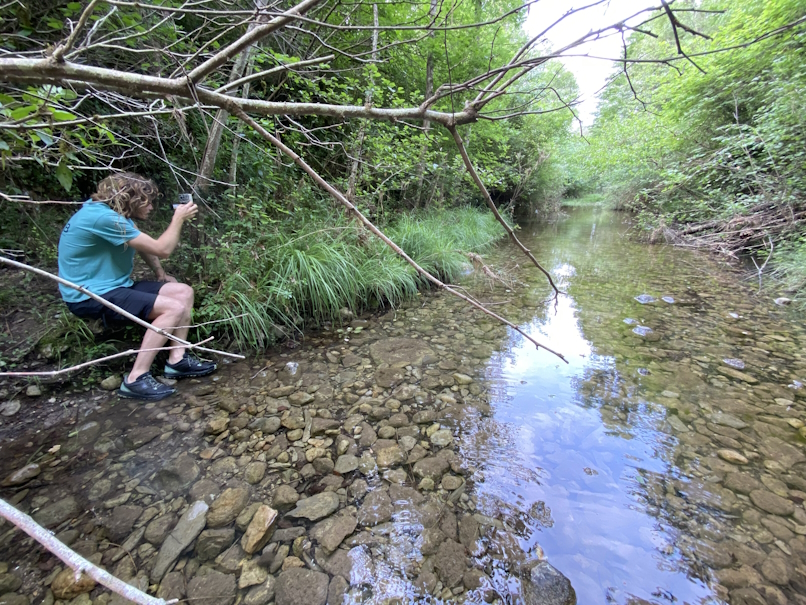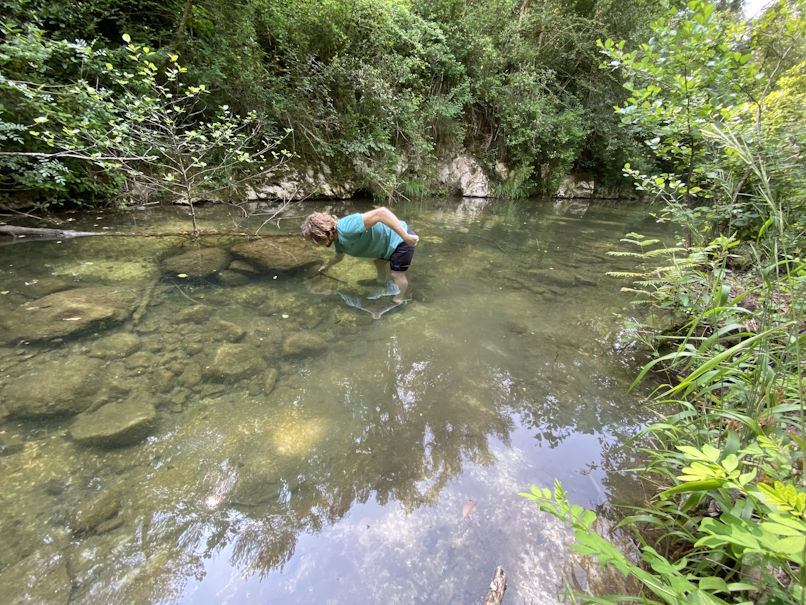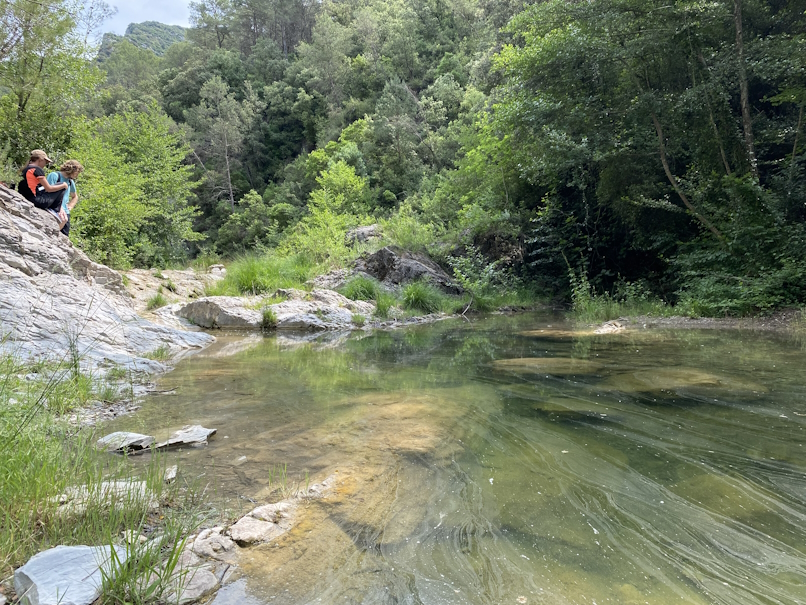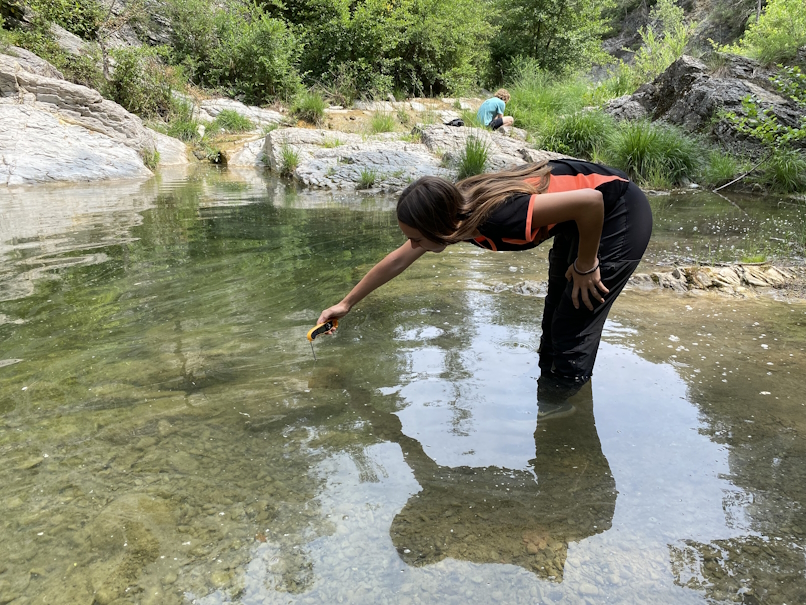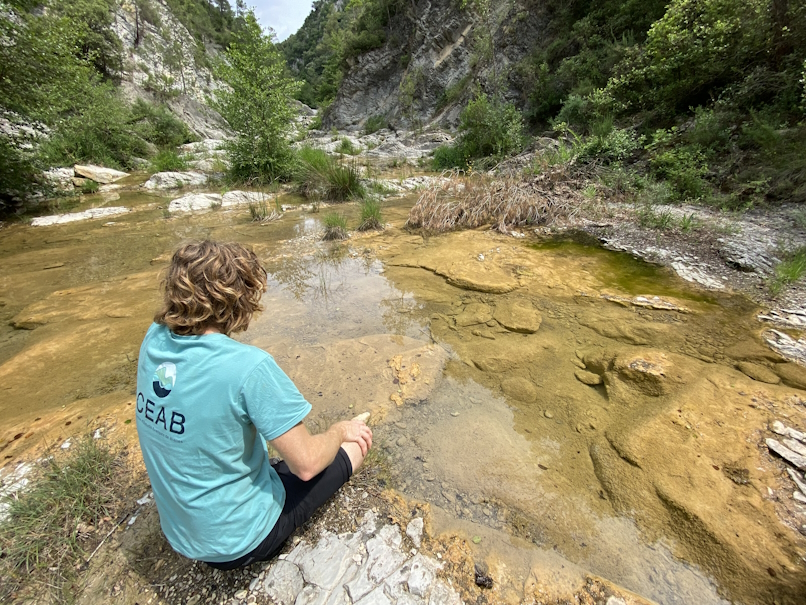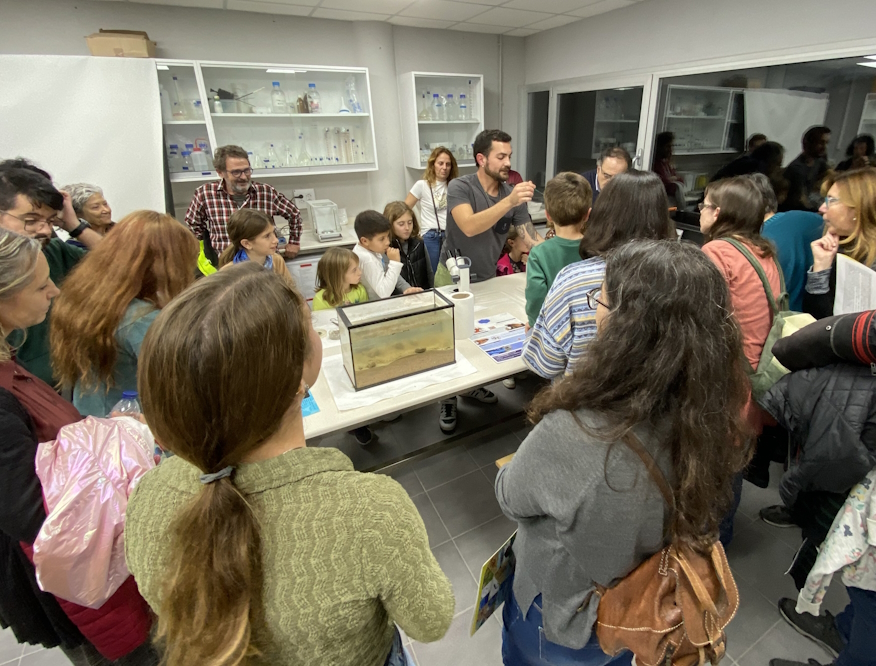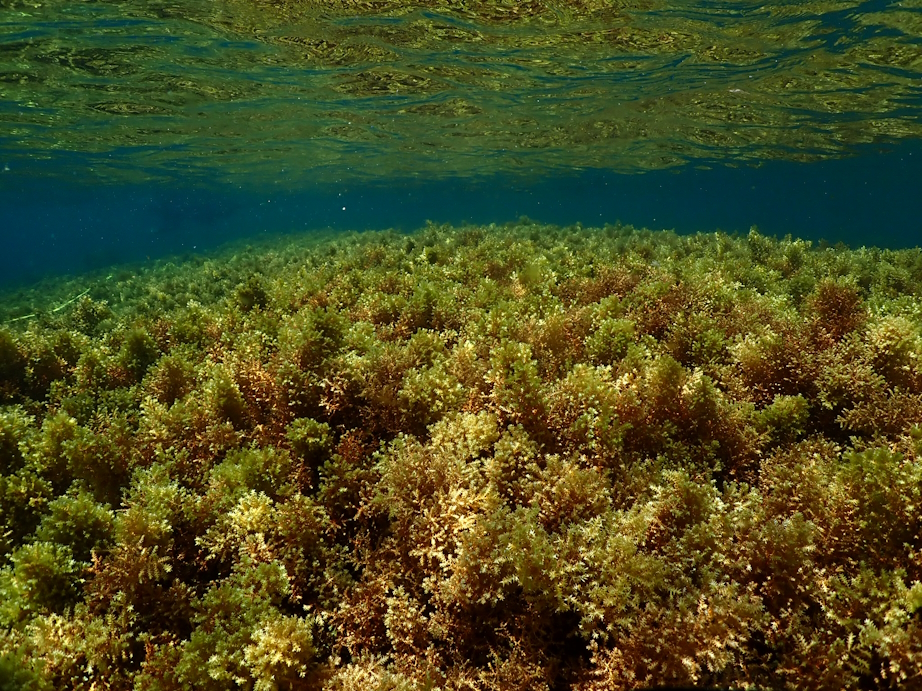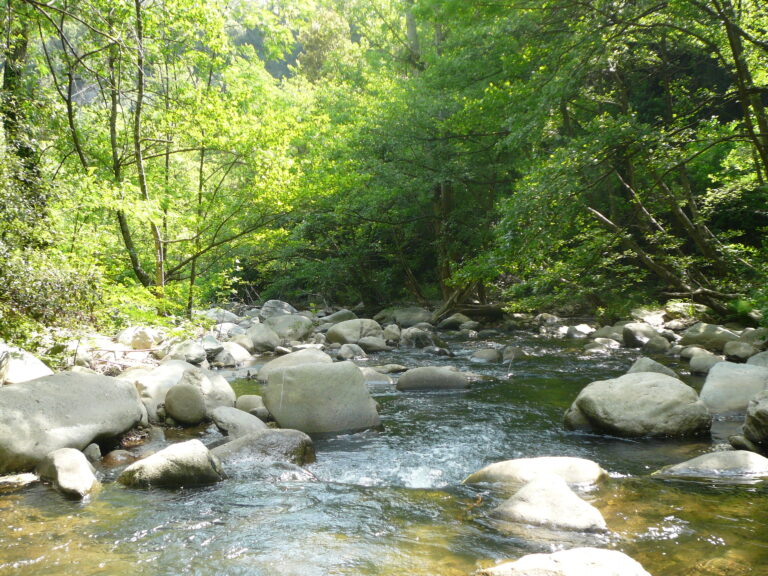A team of researchers from CEAB-CSIC is studying how fish populations can persist in intermittent rivers. They use streams in northeastern Catalonia as a model system. The scientists are focusing on deciphering the behavioral mechanisms of fish that allow them to cope with adverse conditions, including personality traits such as boldness and sociability, which can influence movement decisions and survival in these river networks that partially dry up at certain times of the year, common in Mediterranean climates and increasing globally due to climate change.
Intermittent streams from relatively undisturbed basins, mainly in the upper Garrotxa (Catalonia, Spain), are serving as a model for a team from the Center for Advanced Studies in Blanes (CEAB-CSIC) to try to understand the resilience of fish in rivers that have a highly variable water flow, which are often reduced to isolated pools or stretches of water separated by dry beds. The team studies it from a behavioral ecology perspective, integrating field observation, controlled experiments and innovative monitoring techniques to understand how severe droughts affect fish movement, their use of the habitat and their chances of survival. These scientists seek to decipher behavioral mechanisms that allow fish to cope with the adverse conditions found in these streams so typical of the Mediterranean region.
The research is part of the DRYFISH* project and has an interdisciplinary approach. To monitor fish in their natural environment, the team carries out fieldwork throughout the year, combining methods: regular observation and tracking on the ground, underwater cameras to record fish behavior, tagging individuals to track their movements, drones and Geographic Information Systems (GIS) that provide detailed orthophotos and allow mapping of changes in river connectivity and fish population dynamics, and “trap” cameras (activated by movement) that help identify and quantify potential predators of fish visiting the ponds.
This fieldwork is complemented by controlled experiments in laboratories, with a complex network of aquariums (equipped with an automated video recording system) where different scenarios are simulated to study in detail the behavior of the fish and to test specific hypotheses about individual responses and social mechanisms such as social copying and leadership in drought conditions.
The research is carried out especially with Barbus meridionalis, a native species well adapted to intermittent rivers. Its behavior and survival are compared with those of other species such as several fish considered invasive which, unfortunately, are already common in the area chosen as a model.
The team wants to understand how fish behavior changes throughout the year, from periods of full river connectivity to times of drought when ponds become isolated. Some fish remain or find refuge in ponds that do not dry out, while others end up in habitats that dry out completely and are disconnected from the rest of the stream. Scientists are studying whether there are factors that favor one situation or another. For example, whether individuals are more likely to leave ponds that are drying up to seek better habitats, how fish use shallow areas in low-flow conditions, or whether they remain grouped or disperse as water becomes scarce. They relate these and other patterns to the size, age, social tendencies and dynamics of fish schools, with particular interest in how individuals differ in their ability to reach suitable refuges. For example, social individuals, who stay with the group, may thrive when conditions are stable, while exploratory or solitary fish may take risks earlier—sometimes reaching better shelters and saving themselves, and other times, failing. These behavioral strategies—more cautious or bold, social or solitary—can strongly influence survival, shaping population composition and resilience over time, with possible ecological and evolutionary consequences.
The IP of this scientific project, Jolle Jolles, explains: “Our goal is to uncover the ecological and behavioral mechanisms that allow fish to persist in intermittent rivers. By focusing on individual behavior and decision-making, we hope to better understand how fish cope with the challenges of habitat fragmentation and desiccation, and how their responses may influence population dynamics in the face of accelerating climate change.”
The research is still ongoing, but the almost four years of river monitoring data collected, the completion of several experiments and the ongoing work in the field, allow us to draw some initial conclusions. The preliminary results reveal key behavioral patterns of fish in very shallow waters, with marked differences between individuals in the way they cope with these conditions. Age plays an important role: older fish are more often found in stable refuges, in ponds that always have water. It has also been seen that the variability of precipitation between years —both in terms of the timing and intensity of droughts (when and how much the rivers dry up)— directly influences the movements, and survival, of fish, with impacts not only immediate, but also long-term, in terms of population structure and, potentially, even, on evolutionary trajectories. “We see that the timing and intensity of drying episodes not only condition short-term survival, but probably the future composition and resilience of fish populations,” emphasizes Jolles.
This research project aims to provide new scientific knowledge on how fish respond to environmental change, from individual behavioural mechanisms that influence movement and survival, to the consequences for population structure and long-term ecological and evolutionary dynamics. The research focuses on Mediterranean ecosystems affected by increasingly extreme events. The results could inform conservation strategies for vulnerable species and habitats, while offering insights into broader adaptive systems that involve coordination, resilience and response to environmental uncertainty.


